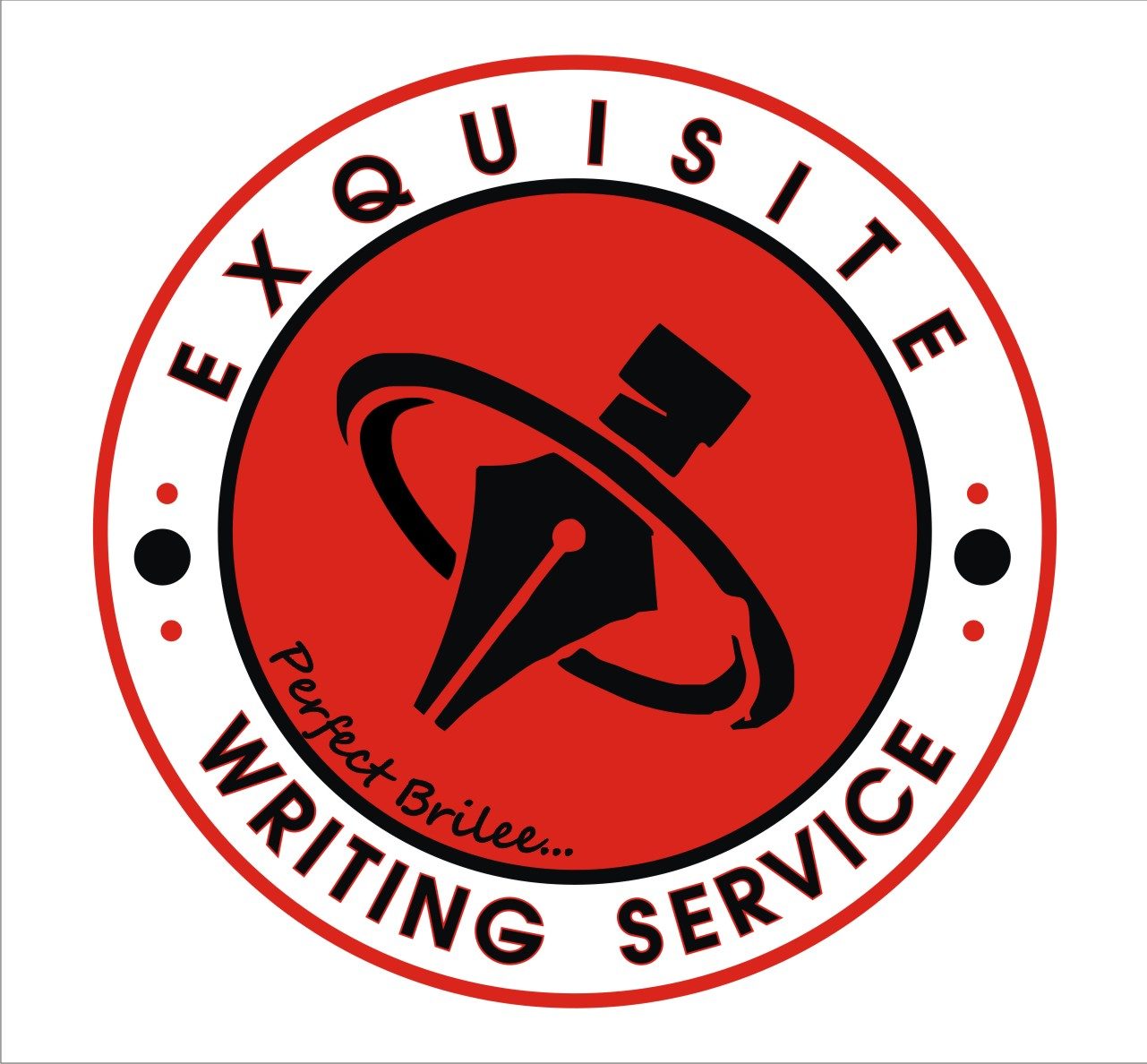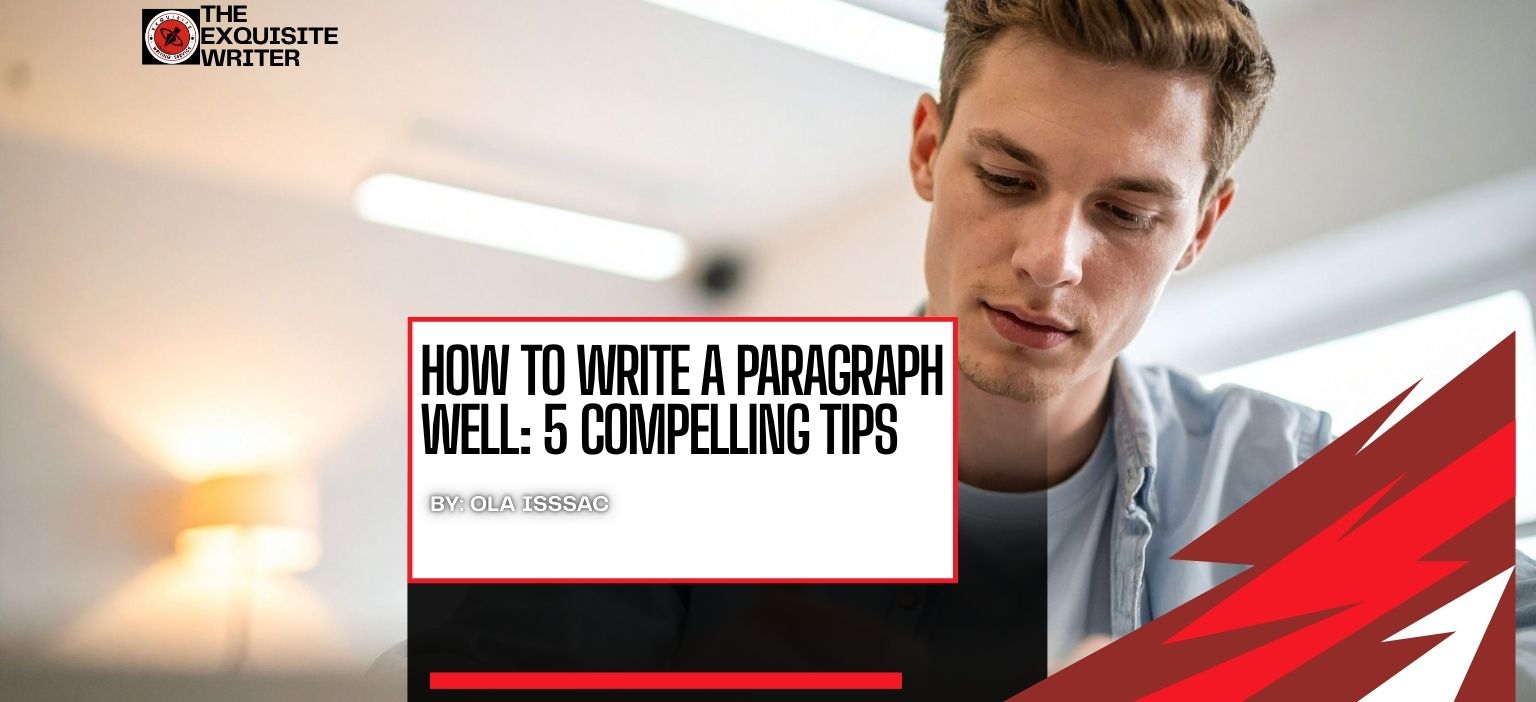Are you a writer or student looking for tips on how to write a paragraph well?
You are definitely not alone, and I’m excited you found your way here!
Sure, crafting a smooth paragraph that does not feel disjointed or chaotic can seem tricky—but step right in; I’ve got you covered!
In this article, you will learn the best tips on how to write a well-written paragraph and the ideal paragraph writing format.
And hey: If you publish on blogs—or anywhere else on the internet—you’ll learn how reading habits have changed our approach to paragraphs.
All set? It’s time to make your writing shine!
Written by Isaac, a writing coach and founder of The Exquisite Writer who helps students and professionals master creative and academic writing. Isaac has helped over 500 students and professionals enhance their writing clarity and structure.
This guide is part of our Writing Skills Series, designed to help you write with clarity, confidence, and creativity.

What Makes a Good Paragraph?
A good paragraph, structured and strung together, comprises three key points:
- A key sentence
- Relevant supporting sentences
- A transition sentence
These three components keep a paragraph focused on the primary idea of the topic and create a concise and clear image.
While following a traditional paragraph structure might not be much of a problem for formal writers, trust me, creative writers might ask questions, and rightly so!
But remember, even creative writing is all about a friendly, relaxed, and engaging tone.
So, when a paragraph is well written and a reader moves from one paragraph to another without friction, the paragraph fulfills the requirement of good paragraphs.
- The bottom line: Your sentences must form cohesive ideas and link to one another. Once you can accomplish that, then a good paragraph is all set!
Now, let’s talk about great tips on how to write a paragraph well.
Related: 11 Grammar Mistakes That Make You Look Like a Noob (And How to Fix Them)

Compelling Tips on How to Write a Paragraph Well
Whether you aim for a long or short paragraph, your paragraph must follow the basic rule of what makes a good paragraph.
It must sequentially and logically relate to the next one.
This builds up the coherency of the body paragraph, linking them together to harmonize the whole idea.
Here are the five essential tips on how to write a paragraph well:
#1. Your Paragraph Must Start With a Central Focus
The first line of the paragraph you are crafting will set the tone for the next information. What does that mean?
It is simple: You must give careful thought to your first line.
The first line must stick with the central focus. Thus, from that, other sentences will start connecting.
Therefore, irrespective of the genre you are writing for—fiction or non-fiction—your first sentence must serve as the foundation on which other sentences will find support.
Of course, this would also mean that you must take your time.
With idea mapping, you will have little worry about starting your first sentence.
#2. Let the Middle Sentences Offer Support
You have started with your key sentence. What’s next? The middle sentences. Your middle sentences must also include follow-up information to the very first sentence.
The points in the middle sentence are not less important than the first sentence, and I’ll tell you why:
- “If you really want your reader to read more or believe in what you say in your first sentence, you just have to pack powerful punches in the middle sentences, too.”
This is where you have to give them everything they need to understand your idea and point of view.
#3. Make Your Last Sentence a Transition
Now, this can be a conclusion, but I love the word ‘transition’ because it conveys a powerful message: you have to leave your readers trusting that there is more ahead.
Your last sentence in a paragraph can either conclude an idea or build anticipation for what is coming next.
While the next paragraph can pick up where the previous idea stopped, it must also hint or say something to connect the two, keeping the connection chain alive.
If it is the final paragraph, let it reflect and summarize all the points made or appeal to readers to implement the idea of the whole content.
#4. Learn When You Should Start a New Paragraph
Your readers need a paragraph break to pause a little bit. They are not in a marathon race with you.
Therefore, in fiction writing, introduce a new paragraph when bringing in a new speaker or character or separating a dialogue from action text.
In non-fiction, introduce it when bringing in a new idea.
A paragraph break can interestingly control the pacing of your writing. It can also generate a specific mood or feelings for readers.
You might have been waiting for this: No set amount of sentences is required to make a paragraph. A single line can make a paragraph!
But what makes it acceptable? If it supports your main idea.
A paragraph can be longer, too. But it must not bore the reader or make them disinterested in your writing.
Your reader does not want too much information. Make it pointed and brief. That is the juicy part of learning how to write a paragraph well.
#5. Transition Words Are Golden
I’m sorry, but I have to get back to this again. You just have to treasure the rhythm of transition words in a paragraph.
They are the fuel that ties your paragraphs together until the very last.
Words like “in addition,” “additionally,” or “moreover” are phrases often used as transition words to help the reader track ideas.
While they are helpful, you do not have to depend on those phrases. By enhancing your writing skills, you can creatively link paragraph A to paragraph B without those words, and your readers will still feel highly connected.
Do not think that this is an attempt to discredit those phrases. However, by not confining yourself to these words, you will make your writing unique and, more importantly, fine-tune your writing skills.
- Add this to the thought: Making your writing more conversational can drive that beautiful flow you need.
Yes, see your writing as a conversation, more like how you speak daily with a friend.
Related reading: 16 Writing Skills Examples to Level Up Your Craft
Types of Paragraph Writing
Ever thought about the types of paragraphs when thinking about how to write a paragraph well in writing? It wasn’t until recently that I started to consider it.
But to be clear, I had always known that paragraphs must link together to make a writing work enjoyable for the reader. Alright, enough stories. Let’s get to the four types of paragraph writing.
Understanding this can help enhance your writing skills and how you approach paragraph writing.
Specifically, there are four types of paragraph writing. Here are they:
- Descriptive paragraph: A descriptive paragraph describes the theme or topic appealing to the five senses. Give thought to the choice of words so you can reach the heart of your readers.
- Narrative paragraphs: As indicated, this paragraph narrates stories or a situation. This style involves sequence. One story leads to another.
- Expository paragraphs: Here, this type of writing involves the definition of something. These paragraphs entail a lot of research.
- Persuasive paragraphs: This type of writing does more than string words together. It entails making readers accept the writer’s viewpoint. Often, these paragraphs are embraced by teachers who offer strong arguments and want to appeal to their readers.
Understanding Paragraph Writing Format
What is the right paragraph writing format? Simply put, there is no particular format for writing a paragraph!
The reason is simple: A paragraph narrates a person’s thoughts, vision, and ideas, which should not be restricted by a specific format.
However, a paragraph becomes well-written only when the writer maintains sequence. This means that a reader reading a good paragraph should read without interruption.
What Has Changed About Paragraph Writing in Recent Times
I’m a big fan of Neil Patel. In early 2020, I stumbled upon an article from his blog. Surprisingly, the paragraphs were quite short—just one to three short sentences.
Oh! Why will Neil Patel do this? It was followed up with an explanation on his YouTube channel.
He explained that reading culture has actually reduced with the advent of other visuals on the internet.
Many internet users spend more time watching videos or artwork than reading a text.
In research on how people read websites, Nielsen found that 79% of his test users always scanned any new page rather than reading word-by-word.
Hence, many readers today just want to read without interruption. I mean, they don’t want to see large chunks of words.
They just want simple, short texts that are easily scannable.
Meanwhile, besides generally appealing to young readers, it also increases readers’ retention time.
Just know that long paragraphs can only grab your readers’ attention if your content is super exciting or if you are explaining a step-by-step guide.
The point: When publishing on the internet, whether on a blog or other social media apps, keep your paragraphs within 1-3 sentences.
- Hint: Did you notice that we adopted that style with this post? Great observation!
Frequently Asked Questions About Paragraph Writing
Here are a few questions worth finding answers to:
Q: How many sentences should a paragraph have?
There’s no fixed rule, but 3–5 sentences often work best for clarity and flow.
Q: Can one line be a paragraph?
Absolutely. As long as it supports your main idea and maintains rhythm.
Q: What is the ideal paragraph length for online content?
For blogs or online articles, shorter paragraphs, around 2–4 sentences work best. They keep readers engaged and enhance readability, especially on mobile screens.
Q: How can I make my paragraphs more engaging?
Use active voice, strong verbs, and sensory details. In addition, mix sentence lengths to create rhythm. A conversational tone helps readers feel connected.
Q: What are common mistakes in paragraph writing?
Avoid overly long sentences, unrelated ideas in one paragraph, and lack of transitions. These break the flow and make your writing feel disorganized.
Q: How can idea mapping help in paragraph planning?
Mind mapping helps organize thoughts visually before writing, ensuring each paragraph develops a single idea logically connected to the next.
Q: How do AI tools affect paragraph writing?
AI tools can help organize ideas and edit grammar, but they shouldn’t replace your personal tone or creativity. Always revise AI-generated text for accuracy and flow.
Q: What’s the difference between academic and creative paragraphs?
Academic paragraphs emphasize structure and evidence, while creative writing allows rhythm, tone, and emotion to shape flow.
Q: Do SEO practices affect how I write paragraphs?
Yes. Search engines do favor scannable content. Break up text with subheadings, bullets, and short paragraphs to improve dwell time and readability.
Final Thoughts
Now that you have gone through the tips on how to write a paragraph well? What is next? Give it a shot! Yes, practice!
Remember, paragraph writing requires special attention. You just have to be precise, short, and to the point.
The group of sentences connected to make a paragraph must make absolute sense!
Do not also forget that the fundamental goal of a paragraph is to ensure that readers read without interruption.
Want feedback on your next piece? Join our free writing challenge or submit your paragraph draft for review at The Exquisite Writer Community.
Therefore, before you hit the publish or send button, read your piece repeatedly to confirm the free flow of thoughts and examine if you have applied the tips on how to write a paragraph well.
A strong first sentence is like a handshake—it sets the tone for everything that follows.
Readers decide within seconds whether to keep reading, so clarity and intent matter.
You can start with a question, a bold statement, or a striking fact, as long as it connects to your main idea.
Great paragraph openings give readers a reason to care, guiding them smoothly into your message while establishing trust in your writing voice.
Want to level up your writing skills? Explore our latest guides on creative writing, storytelling, and content structure — only on The Exquisite Writer!


6 thoughts on “How to Write a Paragraph Well: 5 Compelling Tips”